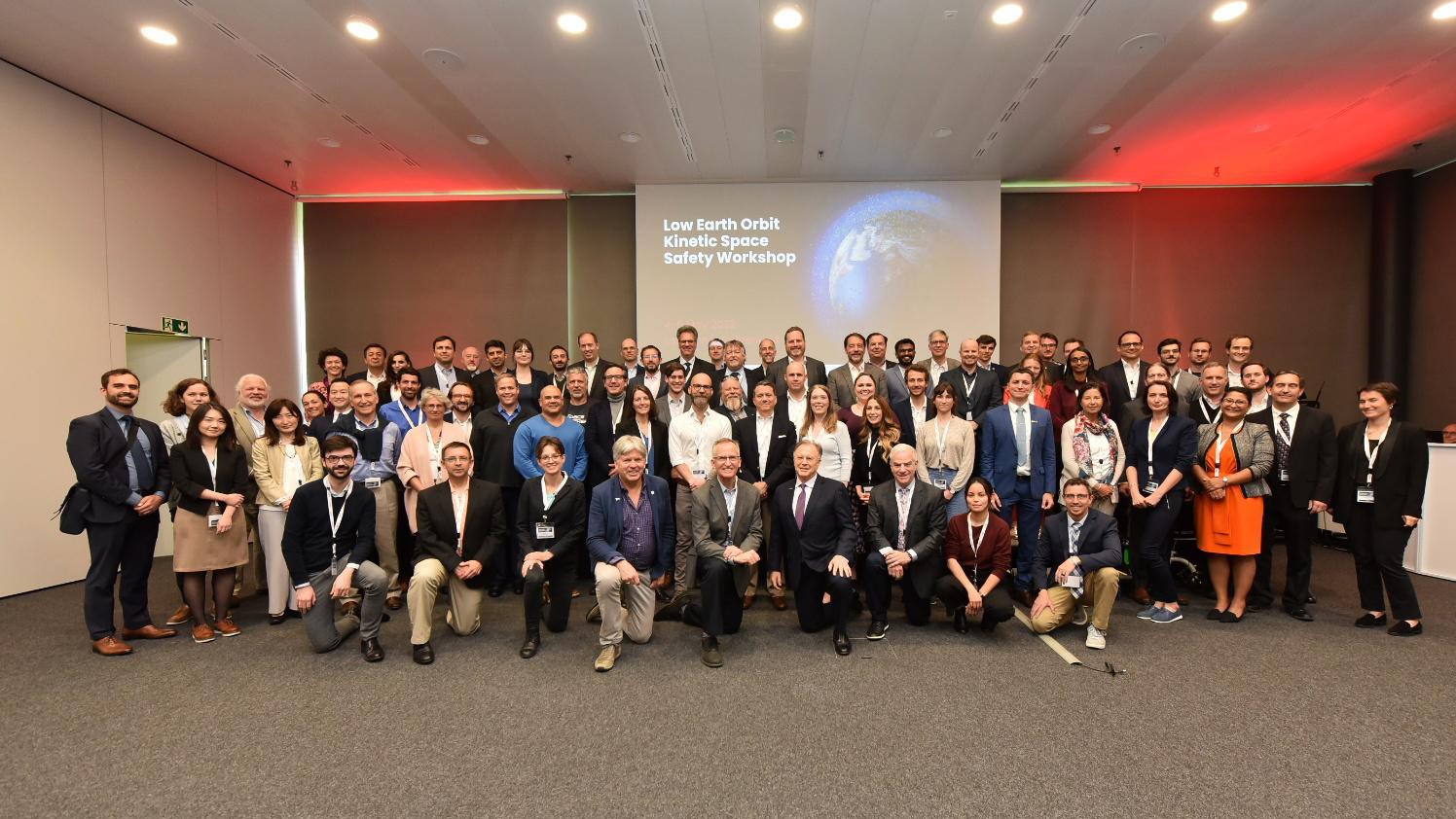30.06.22 - The first Low Earth Orbit Kinetic Space Safety Workshop, organised by ClearSpace, AXA XL Insurance, LeoLabs, along with eSpace - EPFL Space Center and the EPFL International Risk Governance Center (IRGC), was held last month at the SwissTech Conference Center.

The issue of space safety due to the proliferation of space debris is a pressing one. While the rapid growth of space infrastructure has many benefits for life on Earth, decades of unsustainable practices have led to low Earth orbit – the area of space from Earth to 2,000 km altitude – being congested with traffic and debris, making new missions potentially unsafe. There are currently over one million objects larger than 1 cm orbiting the Earth, and companies are planning to launch over 60,000 satellites in the next decade.To deal with this important problem, EPFL hosted the first Low Earth Orbit Kinetic Space Safety Workshop, organised by ClearSpace, AXA XL, LeoLabs and the Secure World Foundation, along with eSpace and IRGC. The two-day workshop brought together space actors and stakeholders from academia, companies like OneWeb, Amazon, SpaceX, Iridium, and Maxar, and governments from Europe, the United States, and Asia. Speakers included eSpace Academic Director Jean-Paul Kneib, former Director General of ESA Jan Wörner, former NASA Administrator Jim Bridenstine, Satomi Kawamoto of the Japan Aerospace Exploration Agency (JAXA), Lauri Newman of NASA, and Muriel Richard-Noca of ClearSpace, among others.
“EPFL was proud to host this workshop, featuring the expertise of several teams and disciplines, all working towards building solutions to the space debris problem,” says Marie-Valentine Florin, Executive Director of IRGC.
The workshop was organised around four areas: impact tolerance, collision avoidance, debris prevention, and debris remediation. Of these, the first two focus on how to minimise risk in the space environment we currently have, while the second two look at what actions space actors can take to change the space environment itself, to make it a safer place to operate.
Numerous panellists highlighted the need for operators to share more data with one another. By being more open about spacecraft location, trajectory, and disclosing incidents when they happen, other operators are better able to avoid dangerous areas, and models and predictions can be done with more accuracy. It is also recognised that best practices for collision avoidance have not yet been globally adopted.
At the moment, the only binding agreements in international space law are five UN treaties that were established in the 1960s and 70s. Non-binding, internationally recognized guidelines also exist, but compliance with these is inconsistent, and existing guidelines have not kept pace with today's levels of space activity.
One such guideline to prevent debris is known as the “25-years rule,” which stipulates that satellites in LEO should re-enter the atmosphere by 25 years after their end-of-life. One of the main takeaways from the workshop was that this rule is outdated and the number of years an inactive satellite is permitted to remain in orbit can and should be reduced.
Commenting on this, Tim Maclay, Chief Technology Officer at ClearSpace says, "The 25-year rule encourages the deployment of non-manoeuvrable satellites to altitudes of 500 - 650 km, while also allowing those with propulsion to retire in these same orbits. This effectively creates a satellite graveyard in one of the most highly-used regions of space. Under this guidance, large constellations of satellites typically designed to operate for 5-7 years are permitted to leave up to five generations of retired satellites in orbit, perpetually. Fortunately, the large-scale systems being deployed today are planning to deorbit much more promptly than this."
Speakers also discussed the necessity of banning anti-satellite weapon (ASAT) testing. In November 2021, Russia conducted an ASAT test that blew up its own satellite and produced over 1,500 pieces of trackable debris, increasing the risk of collision with other spacecraft and threatening human lives.
The discussions highlighted the pressing need for addressing the risk from existing debris. The debris-generating potential is driven by dead-on-dead encounters. “Large rocket bodies and dead satellites can generate tens of thousands of debris pieces,” says Romain Buchs, Space Policy Analyst at ClearSpace. “Actively removing them is removing the lethal non-trackable debris of tomorrow, drastically reducing future collision risk.”
This is a problem that goes beyond borders and political affiliations, and going forward, it will be necessary to have participation from more governments and members of industry. As Darren McKnight, Senior Technical Fellow for LeoLabs, said in his closing address at the Kinetic Space Safety Workshop. “Switzerland is a neutral country, but this is not a time to be neutral on space safety.”